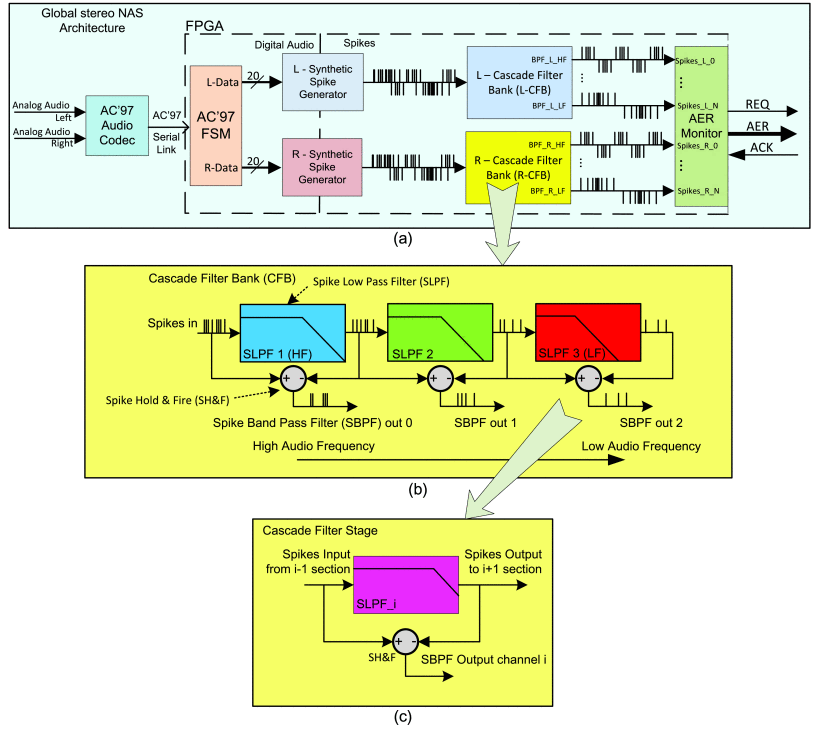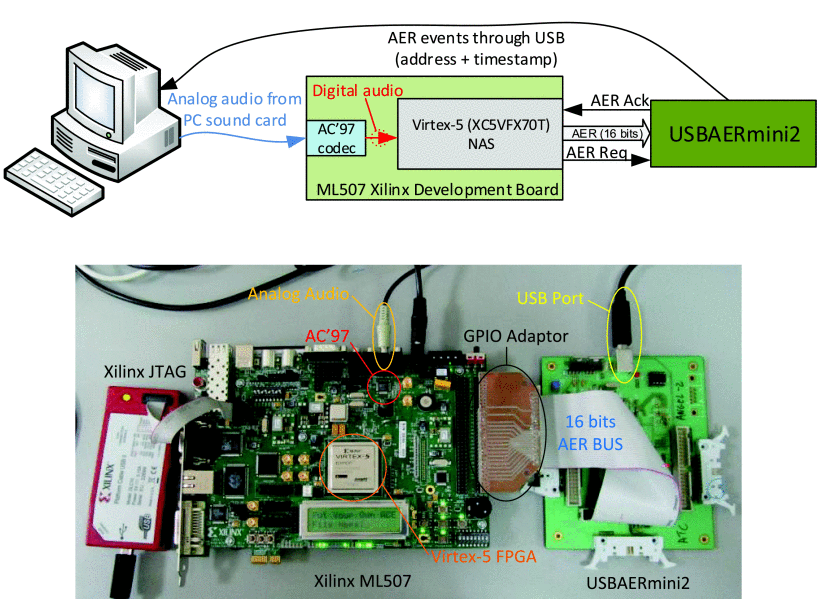Abstract: This paper presents a new architecture, design flow, and field-programmable gate array (FPGA) implementation analysis of a neuromorphic binaural auditory sensor, designed completely in the spike domain. Unlike digital cochleae that decompose audio signals using classical digital signal processing techniques, the model presented in this paper processes information directly encoded as spikes using pulse frequency modulation and provides a set of frequency-decomposed audio information using an address-event representation interface. In this case, a systematic approach to design led to a generic process for building, tuning, and implementing audio frequency decomposers with different features, facilitating synthesis with custom features. This allows researchers to implement their own parameterized neuromorphic auditory systems in a low-cost FPGA in order to study the audio processing and learning activity that takes place in the brain. In this paper, we present a 64-channel binaural neuromorphic auditory system implemented in a Virtex-5 FPGA using a commercial development board. The system was excited with a diverse set of audio signals in order to analyze its response and characterize its features. The neuromorphic auditory system response times and frequencies are reported. The experimental results of the proposed system implementation with 64-channel stereo are: a frequency range between 9.6 Hz and 14.6 kHz (adjustable), a maximum output event rate of 2.19 Mevents/s, a power consumption of 29.7 mW, the slices requirements of 11141, and a system clock frequency of 27 MHz.
 Fig 1. (a) Global NAS architecture. (b) Filter banks with Cascade topology, CFB. (c) Single CFB stage containing an SLPF and an SH&F.
Fig 1. (a) Global NAS architecture. (b) Filter banks with Cascade topology, CFB. (c) Single CFB stage containing an SLPF and an SH&F.
 Fig 2. NAS test scenario block diagram (top) and photograph (bottom).
Fig 2. NAS test scenario block diagram (top) and photograph (bottom).
